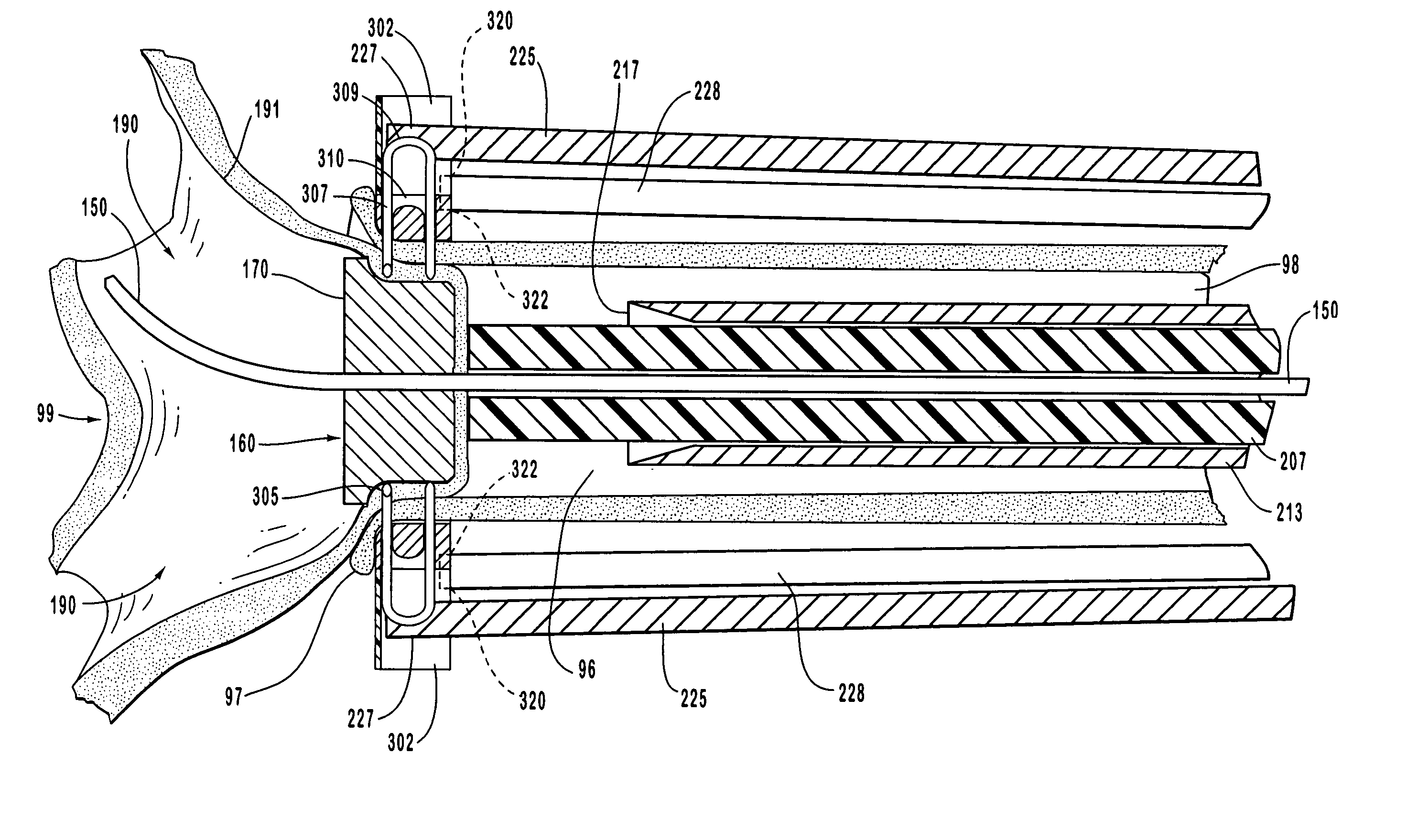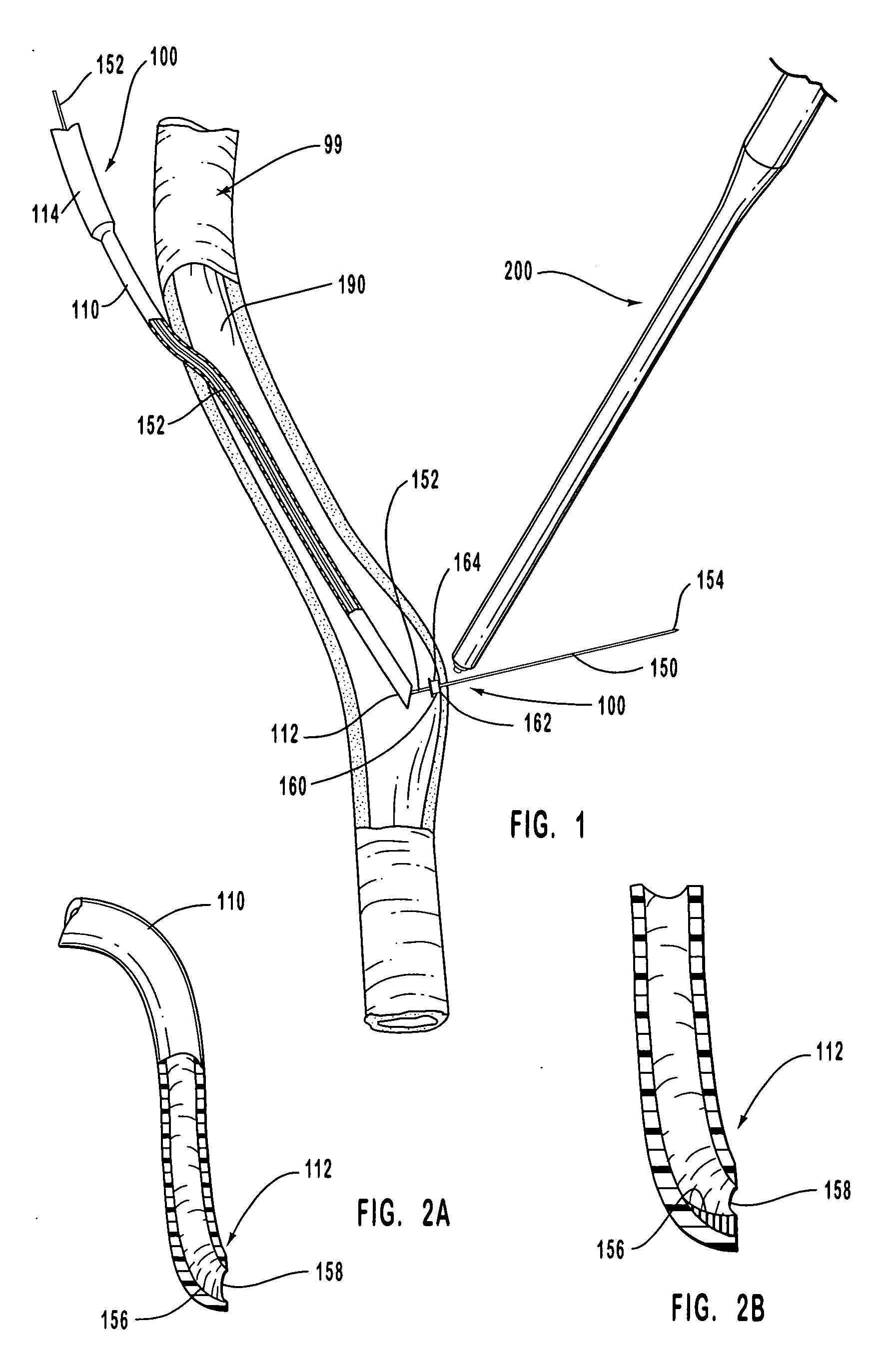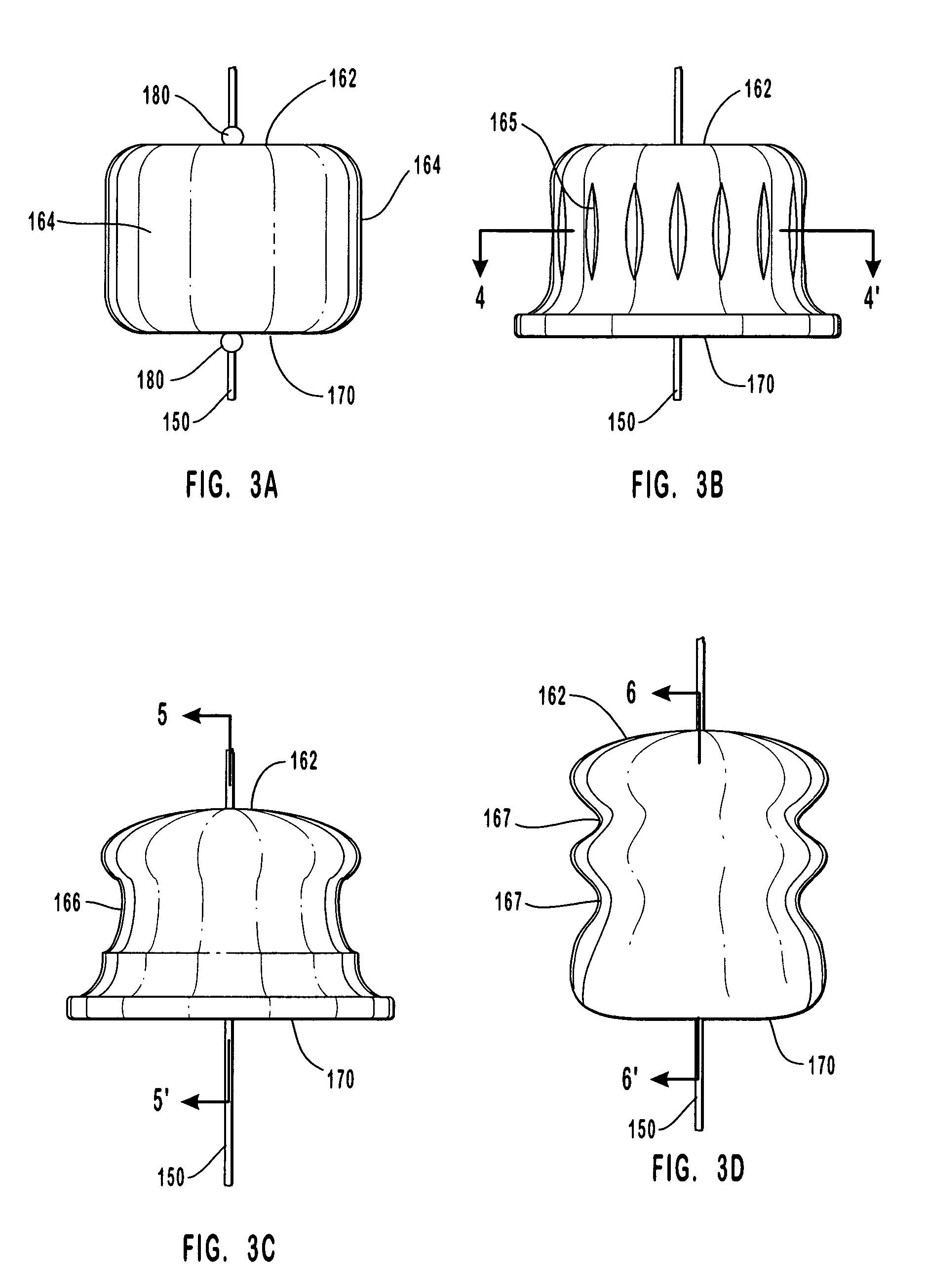Staple and anvil anastomosis system
a staple and anvil technology, applied in the field of intraluminally directed anastomosis methods, systems and procedures, can solve the problems of rising to a potentially lethal colorectal cancer, local lack of oxygen, and inability to implement conventional exploration and anastomosis techniques, etc., to achieve less or no hospitalization time, less medical resources, and less time.
- Summary
- Abstract
- Description
- Claims
- Application Information
AI Technical Summary
Benefits of technology
Problems solved by technology
Method used
Image
Examples
example 1
[0235] In common hemodialysis practice, an artery is shunted to a vein with a vessel that channels the blood flow from the artery to the vein. This vessel is anastomosed at one end to the artery and at the other end to the vein, and it is used in hemodialysis for extracting and subsequently injecting the blood that is dialyzed. Embodiment 200A is used for anastomosing the ends of the vessel that provides the artery-to-vein shunt.
[0236] More particularly, only one end or both ends of the graft vessel can be anastomosed with embodiment 200A. When the graft vessel is anastomosed at both of its ends with embodiment 200A, an end of a graft vessel is anastomosed to the receiving blood vessel while the other end is left open, and another graft is similarly anastomosed at a different site of the receiving blood vessel. The open ends are then joined with a sleeve according to standard practice.
example 2
[0237] Embodiment 200B is also used for anastomosing structures to facilitate hemodialysis in similar fashion as disclosed in Example 1 regarding embodiment 200A. Embodiment 200B, however, relies on clips that do not penetrate the walls of the anastomosed structures and consequently are not exposed to the blood flow, a feature that should minimize the risk of clot formation.
example 3
[0238] To describe this exemplary embodiment of anastomosis device 200 of this invention, reference is made to FIGS. 8-14. In this embodiment, staple engaging device 219, activation sheath 233, staple guide ring 300 with staples 308, and anastomosis ring 350 in the embodiments shown in FIGS. 8-14 are replaced by hand suturing or by a suturing device such as the suturing device disclosed for example in U.S. Pat. No. 5,860,992 which has been herein incorporated by reference in its entirety. The anvil of this invention, such as anvil 160, provides an abrasion resistant surface that deflects the sharp end of a suturing needle.
[0239] Suturing is a technique that has been practiced for a long time, and its features and characteristics are fairly well known. When compared to one of the anastomosis devices herein disclosed, however, suturing sometimes requires a more invasive procedure, it requires comparatively more intensive and specialized training, and it does not provide for the stand...
PUM
 Login to View More
Login to View More Abstract
Description
Claims
Application Information
 Login to View More
Login to View More - R&D
- Intellectual Property
- Life Sciences
- Materials
- Tech Scout
- Unparalleled Data Quality
- Higher Quality Content
- 60% Fewer Hallucinations
Browse by: Latest US Patents, China's latest patents, Technical Efficacy Thesaurus, Application Domain, Technology Topic, Popular Technical Reports.
© 2025 PatSnap. All rights reserved.Legal|Privacy policy|Modern Slavery Act Transparency Statement|Sitemap|About US| Contact US: help@patsnap.com



